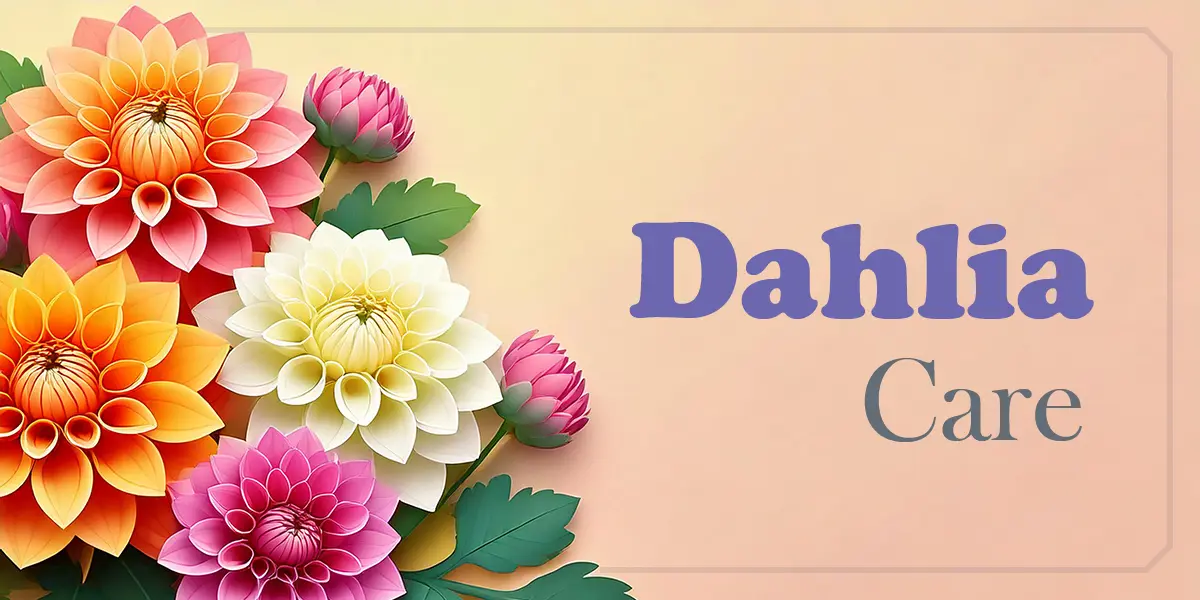What’s the showiest flower of them all?
It might be the dahlia, with its extravagant and intricate blossoms, extraordinary color variety, and long blooming season.
Dahlias are native to Mexico and Central America, where the Aztecs cultivated them for their edible tubers. Following the Spanish conquest, they found their way to Europe, where they gained popularity as ornamental plants.
Dahlias are considered tender perennials and belong to the Asteraceae family, including sunflowers, daisies, and chrysanthemums. In Southern California, where ground temperatures remain above freezing, they can be left in the ground year-round and will return each growing season. However, in colder climates (zones 7 and below), they’re treated as annuals because their tubers can’t survive freezing temperatures.
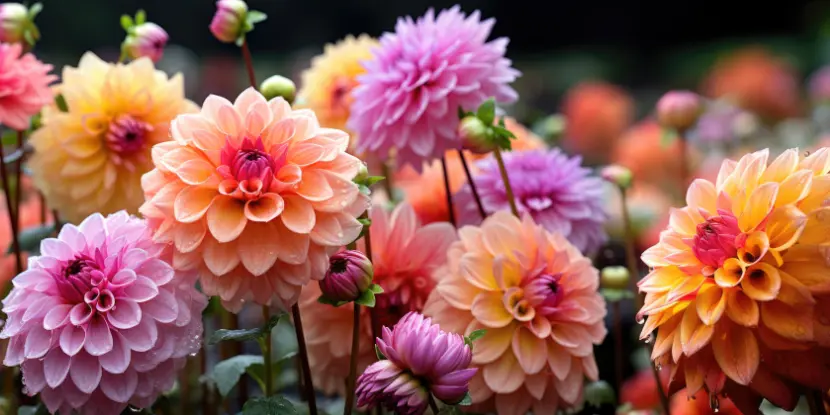
Spectacular dahlia blooms in the garden.
Why Choose Dahlias?
- They have a wide range of colors, shapes, and sizes.
- They have a long blooming season — from midsummer to early autumn.
- They’re a good choice for cutting gardens or as centerpiece flowers.
Common Types of Dahlias
There are 42 recognized species of dahlias and hundreds of varieties, including:
- Dinnerplate Dahlias: Known for their massive, plate-sized blooms, these dahlias are showstoppers in any flowerbed.
- Pompon Dahlias: Compact and round, their ball-like blooms are perfect for flower arrangements.
- Cactus Dahlias: With spiky, pointed petals, these sea anemone-like dahlias offer contrasting textures.
- Single Dahlias: Featuring single-layer petals, these low-maintenance flowers are ideal for beginners.
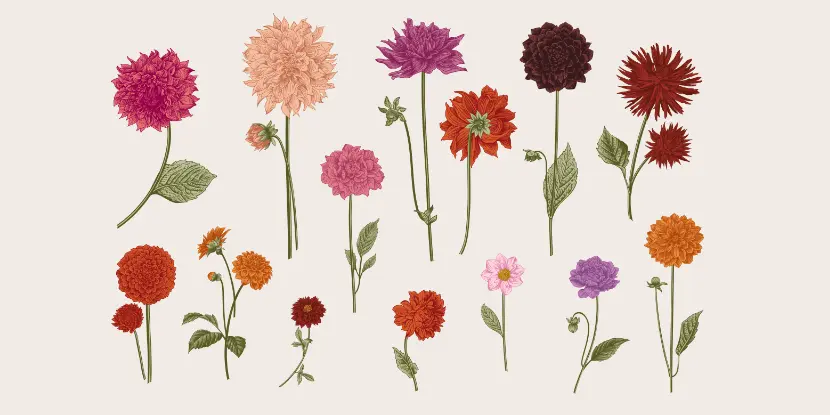
Illustration of dahlia varieties. There are 42 species in all.
Ideal Growing Conditions for Dahlias
Light
- Dahlias need full sun. Aim for 6–8 hours of sunlight daily.
- Partial shade is acceptable in hotter areas, but too little sun can limit blooms.
Temperature
- Dahlias grow best in temperatures between 60°F and 80°F.
- Los Angeles has a favorable climate, but be cautious of extreme heat, which can stress the plants.
Soil
- Well-draining soil is a must. Waterlogged soil can cause tubers to rot.
- pH should be slightly acidic to neutral (6.5 to 7.0).
- Amend heavy clay soils with perlite or compost for better drainage.
- Enrich the soil with compost or organic matter before planting.
Water
- Keep soil moist but not waterlogged, especially during active growth and blooming.
- A drip irrigation system is ideal to avoid getting foliage wet, which can lead to fungal diseases.
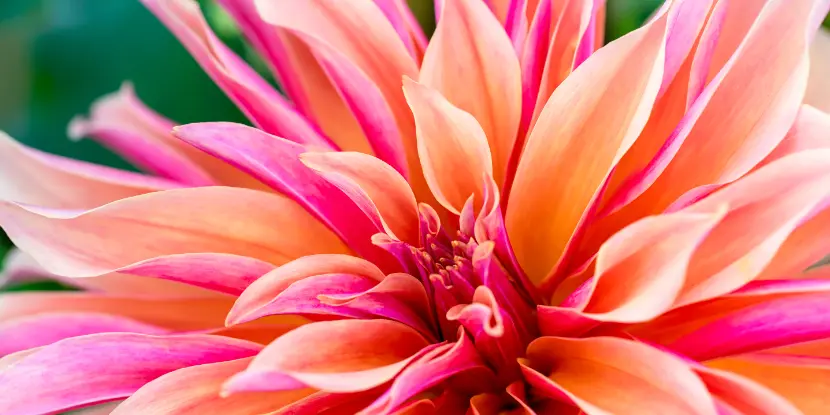
Closeup of a Dinnerplate Dahlia.
Planting Dahlias
Plant dahlias in spring after the last frost when the soil has warmed up.
- Prepare the planting site by loosening soil and mixing in compost.
- Dig a hole twice as deep as the tuber’s height and at least 18 inches wide.
- Place the tuber horizontally in the hole with the eye (bud) facing up.
- Cover the tuber thoroughly with 2–3 inches of soil and water.
- As the plant grows, gradually fill the hole with more soil until it’s level with the ground.
- Larger varieties benefit from stakes or cages to support their tall stems.
Space
- Dahlia plants should be spaced 1–3 feet apart, depending on their eventual size.
- Overcrowded plants may produce smaller blooms and are more prone to disease.
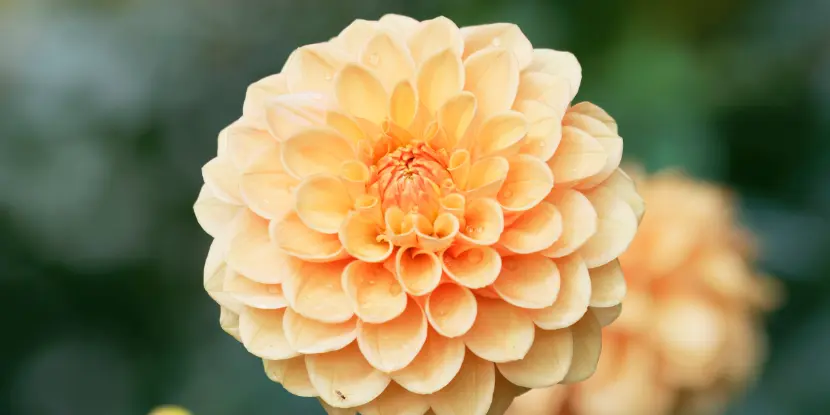
Closeup of a Pompon Dahlia.
Propagating Dahlia Plants
If you want to grow more dahlias without buying additional tubers, propagation is the way to go.
By Division
- After the first frost (if applicable), dig up tubers.
- Cut them into sections, ensuring each piece has at least one “eye” (growth point).
- Store the tubers in a cool, dry place until planting season.
From Cuttings
- Cut a 4-inch shoot from a sprouting tuber.
- Place it in a pot filled with moist, well-draining soil.
- Keep it in indirect light until roots develop.
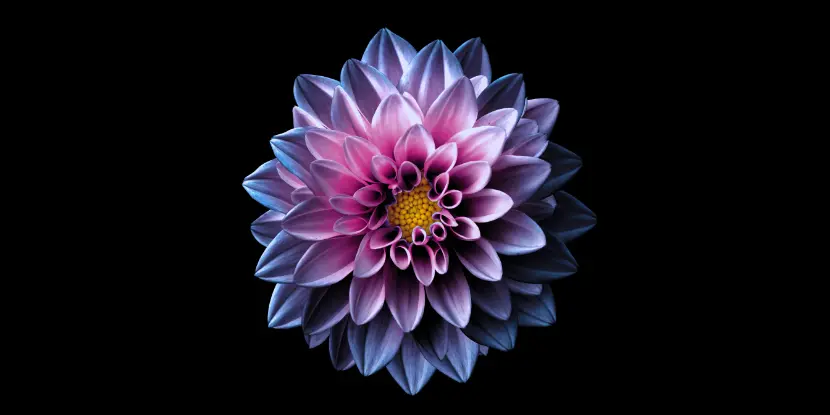
A striking purple dahlia blossom.
Maintenance & Care for Dahlias
Water
- Water deeply 2–3 times a week.
- Avoid overhead watering to prevent fungal issues — water at the base instead.
- Adjust the watering frequency based on the weather; dahlias need less water in cooler months.
Fertilizer
- Apply a low-nitrogen fertilizer (like 5-10-10) monthly once the plant has sprouted.
- Over-fertilizing with nitrogen can lead to lush foliage but fewer flowers.
Pests & Diseases
- Common pests include aphids, spider mites, and slugs. Combat these with neem oil or insecticidal soap.
- Ensure proper airflow and avoid overcrowding to prevent diseases like powdery mildew.
- Remove infected leaves and stems promptly to prevent disease spread.
Pruning
- Remove spent flowers to encourage more blooms.
- Pinch off the top of stems when they’re about 12 inches tall to promote bushier growth and more blooms.
- Remove any dead or damaged foliage throughout the growing season.

A delicate dahlia blossom fully opened.
Harvesting Dahlias
As cut flowers, dahlias can last up to a week in a vase.
- Cut flowers early in the morning before it gets too hot.
- Use sharp, clean shears and cut at least 18 inches down the stem.
- Immediately place stems in water, preferably with floral preservative added.
- Keep them out of direct sunlight and change the water daily.
- Remove any foliage below the waterline.
Overwintering
While Los Angeles winters are mild, storing tubers can extend their lifespan.
- Dig up tubers after the first frost (or by November in frost-free zones).
- Brush off excess soil.
- Store in a cool, dark, and well-ventilated space with damp peat moss.
FAQs: Dahlia Care
Q: How long do dahlias bloom?
Dahlias typically bloom from midsummer until the first frost. With good care, you’ll enjoy blooms for several months.
Q: Can dahlias grow in pots?
Yes! Use a large container at least 12 inches deep with drainage holes. Potted dahlias may need more frequent watering.
Q: Why aren’t my dahlias blooming?
Common reasons include:
- Lack of sunlight.
- Too much nitrogen in the soil.
- Overcrowding or poor airflow.
Q: Do dahlias come back every year?
While dahlias are perennials in warmer climates like Los Angeles, some gardeners treat them as annuals. Store tubers if you want them to regrow the following year.
Q: How do I deadhead dahlias?
Remove spent flowers by cutting the stem directly above the first set of leaves below the flower to encourage continuous blooming. This process prevents seed formation and directs energy towards new blooms.
Q: What soil amendments can help improve growth?
Add organic matter, such as aged compost or well-rotted manure, to the soil before planting. This addition enhances soil fertility and improves drainage, promoting healthy and vigorous growth.
Q: Are dahlias toxic to pets?
Dahlias are non-toxic to humans but can be mildly toxic to pets such as cats and dogs. They may cause mild gastrointestinal upset if ingested, so it’s best to keep them out of reach of curious pets.
Q: Can dahlias be used as cut flowers?
Yes, dahlias make excellent cut flowers due to their vibrant colors and varied forms. To maximize vase life, cut the flowers early in the morning and remove lower leaves from the stems to prevent bacterial growth in the water.

